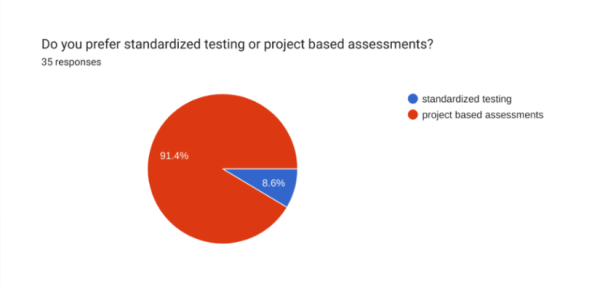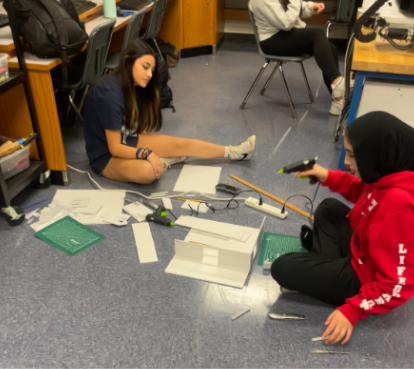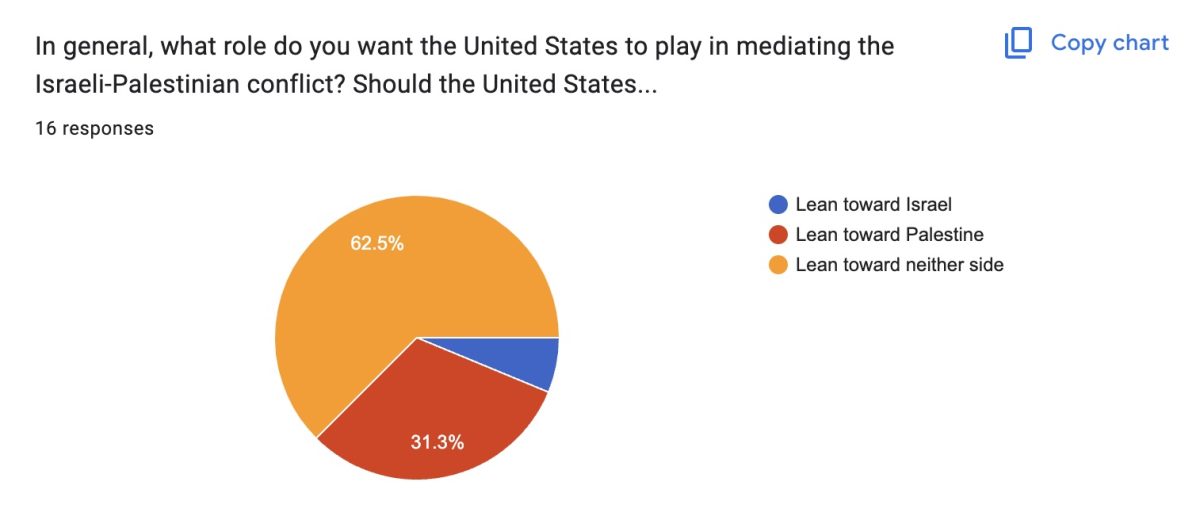Every student has different strengths when it comes to assessments, whether it be multiple choice, projects, or free-response questions. When comparing project-based learning to standardized testing, it ultimately shows that a project-based learning curriculum is more beneficial for students.
Project-based learning allows students to connect theories and concepts with practical applications and real-world problems. There are many ways students are able to use their creativity to create relations between what they learn in the classroom and the real-world outside of it.

“Project-based learning shows students that they can apply what they’ve learned to real-world situations rather than just filling bubbles in on a test sheet,” freshman Becca Cornell said. “Some students have trouble with test taking and projects, this allows them to showcase their knowledge differently.”

Standardized testing creates more stress for students which can affect their performance. Having a question with one corresponding answer puts pressure on students to memorize every problem and its answer rather than expressing their knowledge their way. Many times students just memorize the contents for a test and aren’t able to retain the information afterwards.
“Recalling information from lectures can be even more susceptible to the fading effect. In a study on recall after listening to a seminar, students forgot more than 90% of the points from the lecture after 14 days,” Open Colleges said in an article. “Good grades reflect nothing more than hard work and memorization over a single school term.”
While standardized tests can solely be memorization to pass, projects require using the knowledge you have obtained to showcase your abilities. Academic courses are used to teach students how to pass the test, not how to retain and use the information afterward.
“Individuals don’t do as well during timed testing because they feel more pressure to answer all the questions rather than answering with accuracy,” sophomore Avan Aitha said. “Many students like the team aspect that is present during some projects which gives them an outlet to discuss the topic with others and share ideas.”
Through project-based learning, team projects can show students collaboration and communication skills that they will need to use in the workplace. It can also teach students to step out of their comfort zones and communicate with new people, helping them view different lenses into school topics.
“In many situations, students retain more information on a topic when they’re working with others because they can work together and combine ideas,” freshman Avnitha Guggilla said. “Although there are some downsides such as the possibility of unequal shares of work, that can easily be overcome if students can communicate about issues.”
Project-based learning gives students the opportunity to use their creativity and have their takes on a project, pulling in their passion and hobbies into topics they don’t like. This can make it more interesting and can encourage students to be more engaging in projects if they can apply their interests.

“Projects allow students to have an authentic measure of their abilities as opposed to what can be memorized and regurgitated,” English department chair Alexander Sturges said. “If the curriculum were to change to all project-based learning, I think that the grades would remain the same but the rate students learn the material would increase.”


































